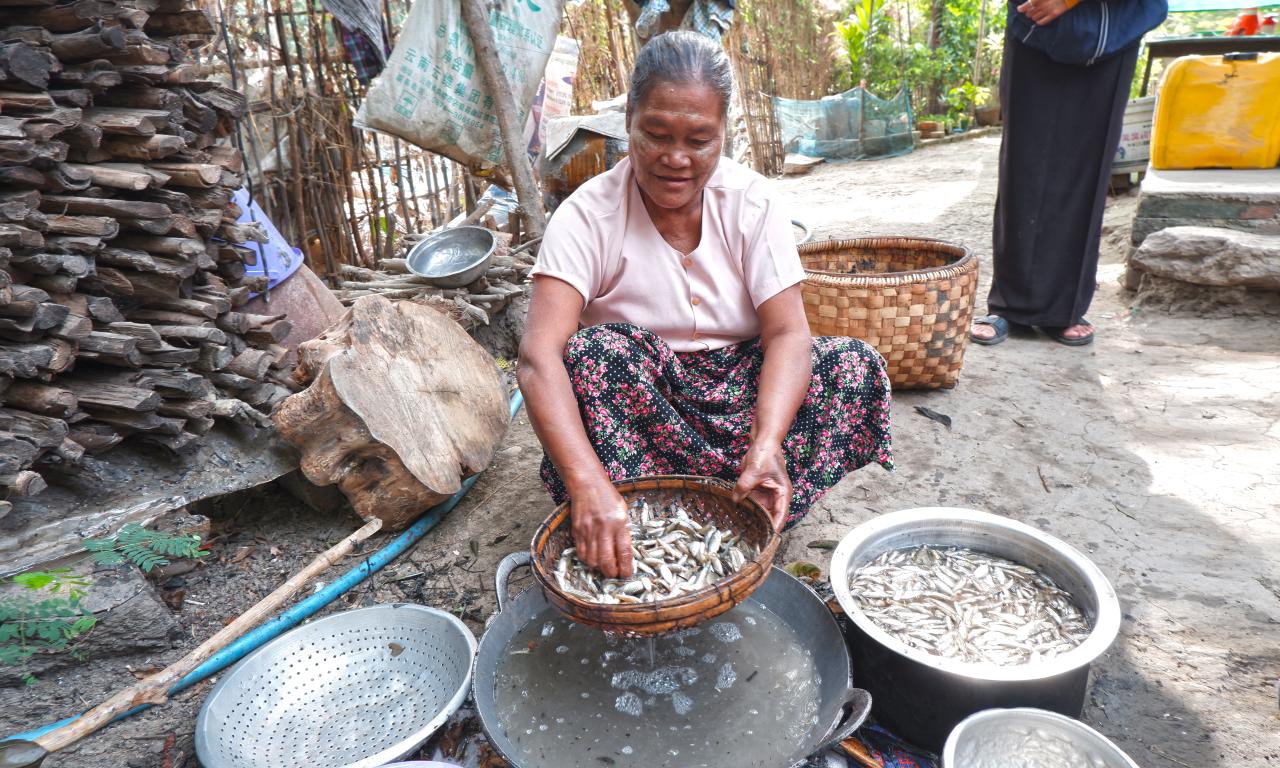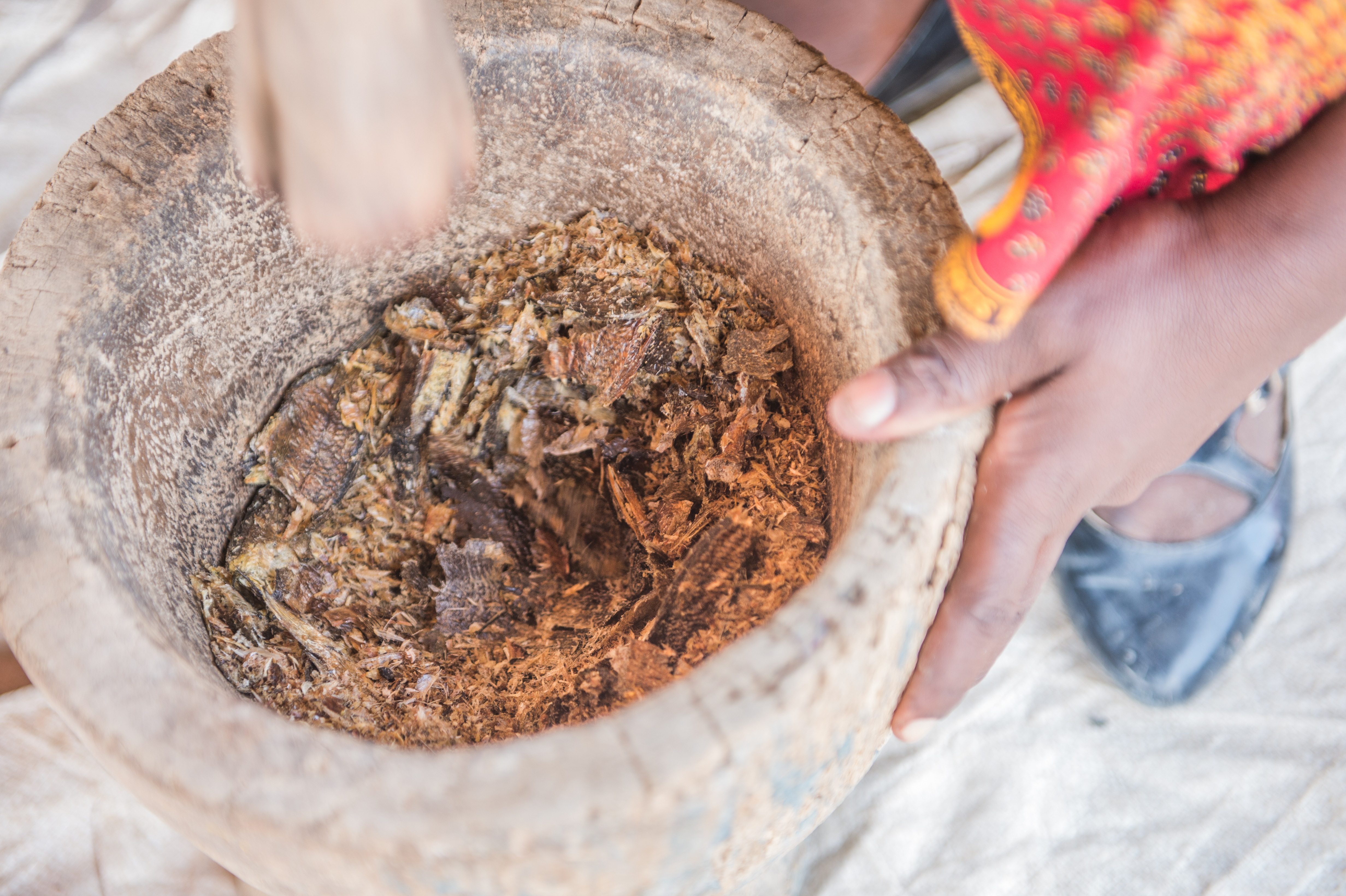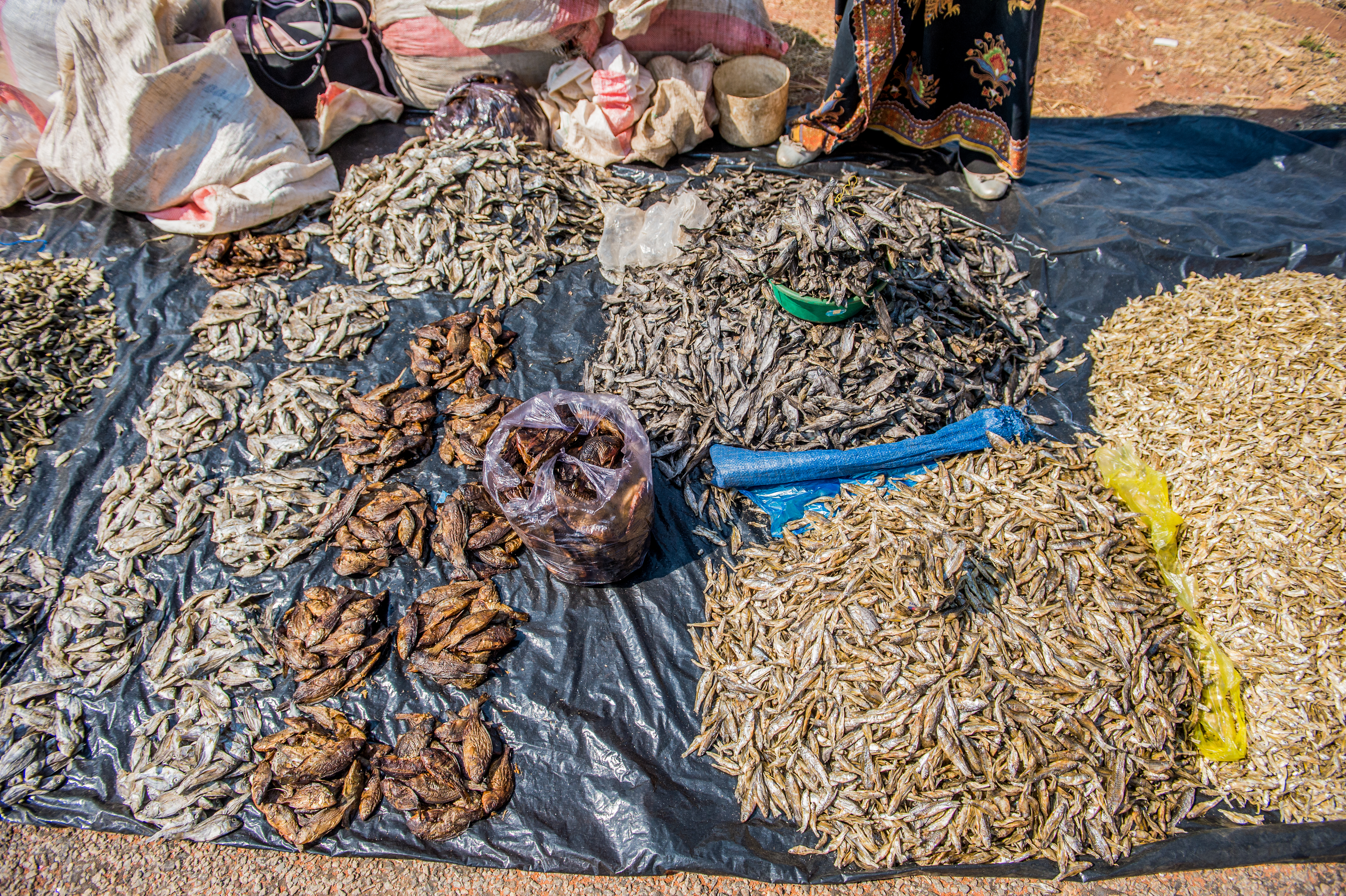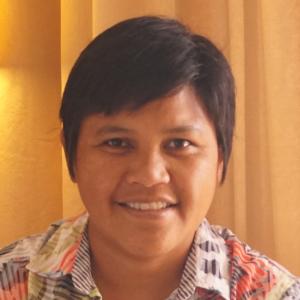
- Consumption of aquatic foods is quite low among Zambians and the communities living in the hilly areas of Myanmar, although they are the most accessible source of animal food in both countries.
- Both countries struggle with high levels of malnutrition, especially among children under 5 years old and women of reproductive age.
- The consumption of aquatic foods, especially dried small fish, can be a solution to the nutritional insecurity experienced by most developing countries, starting with Myanmar and Zambia.
Aquatic foods, containing vital nutrients for human development, are the most accessible source of animal protein in Myanmar and Zambia. However, despite recognition of its many benefits, aquatic foods have not been extensively used in food and nutrition security interventions.
Consumption of aquatic foods is quite low in Zambia, as is the case for communities in Myanmar living in hilly areas. Both countries struggle with high levels of malnutrition, especially among children under 5 years old and women of reproductive age.
Zambia has one of the highest rates of malnutrition, particularly stunting in sub-Saharan Africa. According to a nutrition profile report for Zambia compiled by the United States Agency for International Development (USAID), 35 percent of children under five years in Zambia are stunted (short height for their age) and 4 percent of children under five years are acutely malnourished or wasted (underweight for their height).
The case for Myanmar is not too different. The majority of people in Myanmar, especially women and children, are struggling with physical, social and economic access to sufficient, safe and nutritious food. According to the 2015-2016 Myanmar Demographic and Health Survey by the Ministry of Health and Sports, nearly one in three children in Myanmar under the age of five suffers from stunting while wasting stands at 7 percent nationally.
The importance of promoting nutrient-rich foods in efforts to achieve the United Nations Sustainable Development Goal (SDG) of ending hunger by 2030 cannot be over-emphasized. Aquatic foods can offer the people of Myanmar and Zambia a solution to achieving food and nutrition security for their nations.
Collaborating with partners to scale solutions

WorldFish is working with partners in Myanmar and Zambia on the Nutrient-rich small fish production, processing and marketing in Myanmar and Zambia project to promote the consumption of dried small fish and fish-based products. Funded by the Institute of Food Technologists (IFT), the project aims to expand the availability of nutritious aquatic food products and provide support across the supply chain.
The project partners range from private companies, such as FedWell Foods in Myanmar and SUN CSA Alliance in Zambia, to government ministries such as the Ministry of Health and the Ministry of Fisheries and Livestock in Zambia.
They will manufacture and distribute nutritious and affordable foods enhanced with dried small fish powder – porridge, noodles, snacks and complementary foods – to vulnerable groups, particularly women and children.
Among the priority areas of the project are to enable sustainable production of diverse aquatic foods, improve the availability, accessibility and affordability of aquatic foods for all communities, educate consumers on aquatic foods being a healthy and nutritious dietary option, ensure aquatic foods are safe and healthy for human consumption and prioritize nutrition and health for vulnerable and marginalized people.
The project, which runs from February 2022 to August 2023, will utilize innovative models across the supply chain, from how the aquatic foods are produced, such as polyculture systems for fish production, to the methods for distribution.
Leveraging on the enormous potential of small fish species

Aquatic foods offer a transformative solution yet they are significantly underutilized. The solutions offered by this project will utilize aquatic foods, especially indigenous small fish species, to address the growing problem of malnutrition globally, starting with Myanmar and Zambia.
Small fish species hold enormous potential to improve nutrition. When eaten whole, they are particularly rich in micronutrients like calcium, vitamin A, iron, zinc, vitamin B12 and essential fatty acids, all of which play important roles in a child’s cognitive development and growth.
Dried small fish is accessible among households of low socioeconomic status in Zambia as it is widely available at local markets and can be purchased in small quantities and at a low price. It can also be transported and stored relatively easily compared to fresh fish.
Moreover, dried small fish such as kapenta and chisense are often divided more evenly among household members compared to larger fish or other animal proteins. By increasing access to dried small fish, the intake of essential nutrients among women and children can potentially improve.
The consumption of aquatic foods, especially dried small fish and fish-based products, can be a solution to the nutrition insecurity experienced by most developing countries, particularly those laden with high malnutrition levels in children within the critical first 1,000 days of life.

